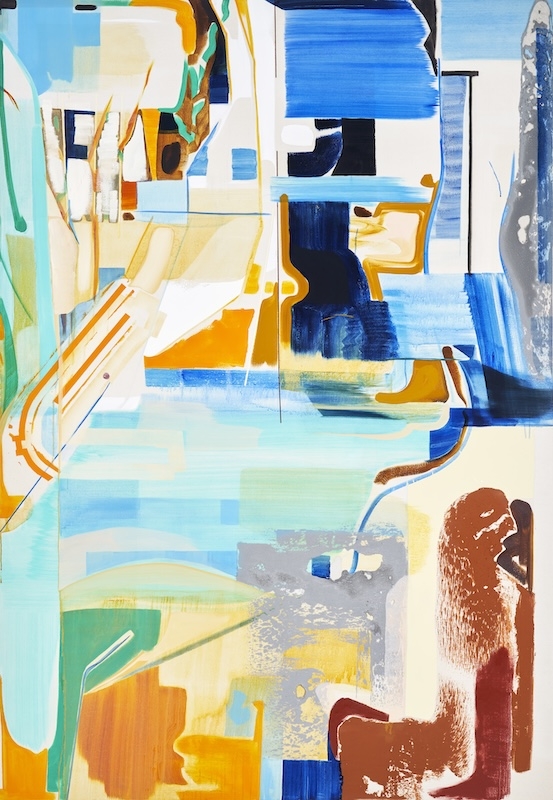항해사들에 관한 전설
이카루스에 관한 잘 알려진 전설은 그를 멀리서 바라본 사람들의 목격담이다. 땅에 선 사람들은 밀랍 날개를 단 이카루스가 하늘을 향해 솟구쳤다가 태양에 너무 가까이 다가간 나머지 날개를 잃고 바다로 추락하는 모든 과정을 지켜봤다. 위를 올려봐서는 안돼… 그건 너무 위험한 일이야… 그 경험은 공동체를 만들었고 이내 비극의 서사가 되어 전승되었다. 그러나 비극이 비극이 되는 이유는 그것이 되풀이 된다는 사실에 있다. 땅의 사람들은 연극을 만들었다.
그보다는 덜 알려진 이카루스에 관한 또 다른 전설이 있다. 이 전설은 바다로 추락한 이카루스의 몸을 건져 올린 바다사람들에 의해 전승되었다. 그들은 이카루스의 반짝이는 눈을 유독 신비로워 했고, 그것을 마을로 가져가 모두가 잘 볼 수 있도록 너른 땅에 제단을 쌓고 그 위에 놓아두었다. 오랜 시간이 흐르며 이카루스의 눈은 썩어 없어졌고 눈을 가지고 돌아왔던 이들의 자손들은 그 눈에 비쳤던 이미지를 대대로 전승했다. 바다사람들이 구전하는 이카루스의 이야기는 땅에 선 사람들의 그것과 다르지 않았다. 그러나 이카루스의 눈이 남긴 이미지를 간직한 이들에게 그것은 전혀 다른 전설이었다. 아래를 내려다봐서는 안돼… 그건 너무 위험한 일이야…
바다사람들에게 내려다보는 눈은 금기가 되었다. 그러나 내려다보는 일이 허용되었던 특별한 사람들이 있었다. 바다사람들은 크게 세 부류로 나뉘었는데, 첫 번째는 해안이 보이는 가까운 바다까지 나가는 사람들이다. 두 번째는 해안이 보이지 않는 더 큰 바다까지 나가는 사람들이다. 마지막 세 번째는 바다를 건너 다른 해안까지 다다랐다가 돌아오는 사람들이다. 세 번째 부류의 사람들에게 내려다보는 일이 허용되었던 건 기나긴 항해를 시작하기 위해서는 아직은 다다르지 못한 수평선 너머의 허구의 장소를 멀리 내다 보는(tele-vision) 일이 필요했기 때문이다. 그러나 그들은 특별한 권한을 가진 만큼 거부할 수 없는 의무 또한 가졌다. 그들은 최초의 이미지 위에 저 너머를 향해 가까이 다가갔던 여정의 기록을 덧씌워 나가야 했고, 덧씌우는 일은 최초의 이미지와 싸우는 일이었다. 바다사람은 그림을 그렸다. 그리고 그들은 자신의 그림에 스스로 한계를 부여했는데, 메워지지 않은 희미한 격자는 기나긴 이동을 설명했다.
오랜 시간이 흘러, 바다사람의 후손들은 더이상 항해를 하지 않게 되었다. 하지만 그들은 멀리 내다 보는 눈과 이동하는 몸의 싸움으로 항해를 기억한다. 그 싸움은 다시금 그림 속에서 이루어지고 그림으로 설명된다. 그것이 바다사람들 사이에서 전해지는 잘 알려지지 않은 전설이다.
A well-known legend about Icarus is the eyewitness account of those who saw him from afar. Standing on the land, they watched as the wax-winged Icarus soared up into the sky, got too close to the sun, lost his wings, and then plummeted into the sea. You should not look up… it’s too dangerous… The experience created a community, and it soon became a tragic narrative that was passed down from generation to generation. But what makes a tragedy a tragedy is the fact that it is destined to be repeated. The people of the land made a theater.
There is another, lesser-known legend about Icarus. This legend was told by the sea people who recovered the body of Icarus after he had plummeted into the sea. They found Icarus’ eyes particularly mysterious, so they took them back to their village, where they built an altar on a large expanse of land for all to see. Over time, the eyes of Icarus rotted away, but the descendants of those who returned with it passed on the images it reflected from generation to generation. The story of Icarus told by the sea were no different from those of the land, but to those who carried the image of Icarus’ eye, it was a different legend. You should not look down… it is far too dangerous…
For the people of the sea, looking down was taboo. However, there were some people who were allowed to look down. The sea people were divided into three groups: the first were those who went out to the near shore, where they could see the coast. The second were those who went out into the deeper seas, where the shore was not visible. The third group of people were those who crossed the ocean to other shores and back. The third group was allowed to look down because it required a “tele-vision” to look far beyond the yet-to-reach horizon to begin their long voyages. But with their special privilege came an irresistible obligation: They had to overlay their original image with their record of the journey when they had close to the other side. And to overlay, was to fight and contend with their original image. The sea people painted. And when they did, they imposed their own limits on their paintings, a faint grid of unfilled lines describing a long journey.
Time has passed, and the descendants of the seafarers no longer sail. But they remember their voyages as a battle between the far-seeing eye and the moving body. That battle is once again played out in paintings and illustrated with paintings. This is a little-known legend among the sea people.
